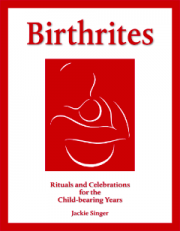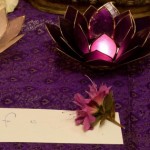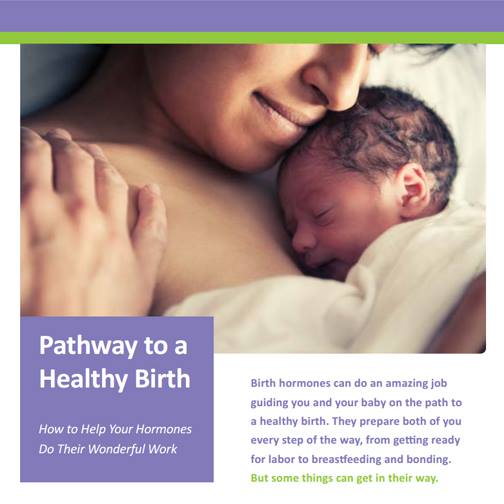By Jackie Singer
Greetings to all of you from the UK. Sarah Whedon contacted me recently when she found a copy of my book, Birthrites, in a bookshop in San Francisco. I’m touched that it was an actual physical book in a real life bookshop! I imagine the pages in her hands, and feel a connection across acres of land and Atlantic waves to our little island, and me in my attic on a grey November morning. Birthrites is not a book for Pagans per se, but it does deal with matters of Pregnancy, Birth, and all aspects of Fertility as if they were sacred experiences. In my research I interviewed people from a range of traditions, and hope to provide inspiration and resources to anyone with a sense of the sacred, regardless of their path. For myself, my relationship to nature and to the feminine mysteries is central to my spirituality.
I would like to share with you an extract from my book, which suggests meditation practices to do during pregnancy, in the hope that it may blend with what you are exploring and find a form that appeals to your own soul and imagination. I do feel passionately that the way in which we greet and birth the new beings coming to earth at this time is very important.
Meditations in Pregnancy
Meditation to make contact with the child
In the first weeks of pregnancy, despite the immediate and dramatic changes to the mother’s body, the presence of the new being is very subtle. For myself, during the early uncertain days, I felt that I wanted to reach out to the soul of the child and express a quiet welcome and an invitation to settle in. This seemed in stark contrast to the language of screening and testing that is the way of our current antenatal services. I wanted my first communication with the foetus to be, “Hello, welcome!” rather than “Are you normal?” I contacted a doula (a birth partner) and was introduced to a different way of making contact with the baby, which was about sensitively communicating rather than objectively ‘scanning’. Doulas work alongside midwives to support women emotionally and practically through pregnancy and birth, and I certainly found that involving one brought a more holistic approach.
This is the meditation that my doula guided me through, and which I was able to use on my own at other times throughout the pregnancy:
Sit comfortably and let your breath settle into a rhythm. Bring your hands to your belly and bring your attention inside to your womb. Speak silently to greet and welcome the baby, and say anything you want about how you feel about its arrival. See the womb as a room and visualise making it ready, just as you would for a guest. Dust the surfaces, add fresh flowers, light a candle, whatever feels right.
Ask your baby if there is anything that it needs to help it come into life and just listen for responses. (You may not hear words, but you might see an image or have an intuitive sense of an answer.) You could ask how it feels about ultrasound or any other tests you are thinking about having. Or use this opportunity to explain if there is something coming up that it needs to prepare for. Later on in pregnancy you can ask if there is anything the baby needs to help it be ready for birth. Finish the conversation and return to quiet breathing. Open your eyes when you are ready.
Don’t worry if you don’t feel you had any clear answers to questions. Sometimes just asking the question can bring about clarity because it acknowledges that the child has a point of view. However, if you do have a strong intuition about a response, be sure to honour it if you can. This builds trust and respect between mother and baby.
Marking the end of the first trimester
After the first 12 weeks of pregnancy the tiny foetus is fully formed and the pregnancy is much more secure. It is as if a decision has now been made about whether this relationship between mother and child will hold. In our culture this is commonly the time when the secret of the pregnancy is made public. Traditional societies have acknowledged this threshold in more poetic ways. Chinese traditional medicine holds that the ‘Shen’ (soul) of a child moves in at about three months. This is the point in Acupuncture practice when a special point called ‘House Guest’ is warmed with a herb, ‘moxa’, in order to nourish the body deeply. For Australian Aboriginals it is not until a woman feels the first kick from the unborn child that conception is deemed to have taken place, when a spirit child in the land springs up into her womb and sings the foetus into life.
One thing my partner and I did around this time in my first pregnancy was buy a big candle with three wicks. Lighting one for me, one for him and one for the baby was a simple way to focus our minds on the growing family. We sometimes just sat with him behind me, and the candle in front for a few minutes in silence, taking in the new reality. After such times we sometimes had good conversations, which got straight to the heart of things and brought us closer. I have to say it was much harder to find time to do this with our second pregnancy, added to which a candle with four wicks seemed to result in lots of leaking wax and mess! An alternative way to mark the occasion could be to go to a special place in the land and take an offering for thanks, especially if you went on a pilgrimage to ask for the blessing of fertility before this pregnancy.
Meditation on circles of support
It is not only the mother who feels the need for extra holding during pregnancy; the father too bears a new responsibility, and may well feel a whole new set of demands upon him. The following meditation, given to my partner and me by my Sufi teacher, focuses on the need of both parents to be supported as they prepare themselves for parenthood. It can be done at any stage of the pregnancy. You could of course do this on your own, if your partner is absent or unwilling.
Sit opposite each other so that the baby is between you, and hold hands if this is comfortable. Settle for a few minutes as you let your breath find a rhythm and become aware of each other’s breathing. Focus your awareness on your heart and on opening to the heart of your partner. After a while, shift your awareness to the mother’s womb and to the baby safely held there between you.
Now visualise behind you the people who are supporting you as you go through this change. Acknowledge your parents and grandparents, whether they are alive or not. Then remember other family members and close friends and beyond these greater circles of support. Behind all of these you might like to imagine a spiritual presence holding all of the human helpers. You could see it as a guardian angel, powerful goddess, or a great dove holding out its wings and keeping all under protection.
Sit a little while in the knowledge of this support and practise leaning back into it, as if into an armchair. Have an awareness of all the support behind your partner too, which joins up with yours to form a circle surrounding both of you with love.
When you are ready, return briefly to an awareness in the heart and a steady breathing. Open your eyes when you are ready. If you like, take some coloured pencils or pastels to make a sketch of this image or sensation.
Jackie Singer is the author of Birthrites – Rituals and Celebrations for the Child-bearing Years, published by Permanent Publications. She lives in Oxford, England with her husband and two girls, and is musician, storyteller, and freelance celebrant, finding new ways of marking rites of passage and making life sacred. Jackie has just begun work on her second book about Coming of Age, and would be delighted to hear from any parents or young people with a story to share on this theme. See www.jackiesinger.co.uk.
Editor’s note: Watch Pagan Families for a review of Birthrites coming soon.
















